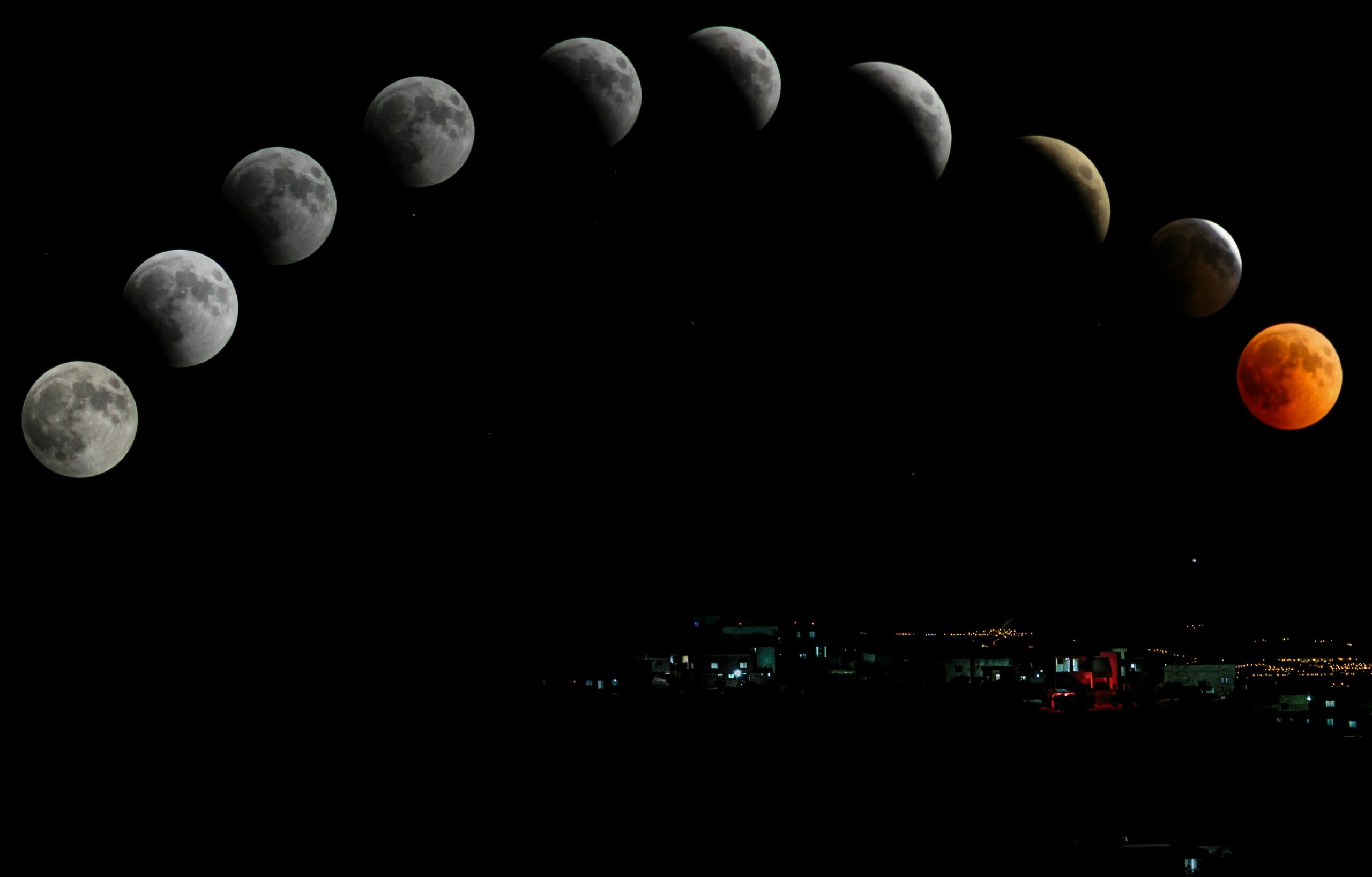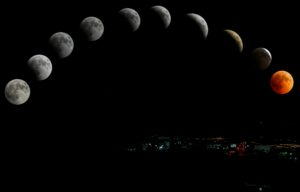
Phases of the Moon
The Moon has fascinated humanity for centuries, inspiring myths, calendars and scientific inquiry. Its phases are not only beautiful to observe but also play roles in various natural phenomena. Let’s explore the phases of the Moon and examine their effects on tides, weather and other aspects of life.
The Phases of the Moon
The Moon goes through a complete cycle of phases approximately every 29.5 days, known as a lunar month. Here’s a breakdown of the primary phases:
- New Moon: The Moon is between Earth and the Sun, making it invisible to the naked eye.
- Waxing Crescent: A small sliver of the Moon becomes visible as it moves away from the Sun.
- First Quarter: Half of the Moon’s surface is illuminated, creating a perfect semicircle.
- Waxing Gibbous: More than half is illuminated, leading up to the full Moon.
- Full Moon: The entire face of the Moon is visible, reflecting sunlight fully.
- Waning Gibbous: After the full Moon, the illuminated portion begins to decrease.
- Last Quarter: Another semicircle, but this time the opposite side is illuminated.
- Waning Crescent: A small sliver remains visible until the Moon returns to the new phase.

Effects on Tides
One of the most significant influences of the Moon is on the Earth’s tides. The gravitational pull of the Moon causes water to bulge out on the side of the Earth facing the Moon, creating high tides. There are typically two high tides and two low tides each day due to the Moon’s orbit.
- Spring Tides: Occur during the new and full Moon phases when the Earth, Moon, and Sun align, resulting in the highest tides.
- Neap Tides: Occur during the first and last quarters when the gravitational pull of the Moon and Sun are perpendicular, leading to lower tides.
Understanding these patterns is crucial for coastal communities, fishing, and navigation.
Impact on Weather
The relationship between the Moon’s phases and weather is less clear-cut. Some people believe that the Moon can influence weather patterns, with anecdotal evidence suggesting that certain phases might correlate with specific weather conditions, such as increased rainfall during a full Moon. However, scientific studies have not consistently supported these claims.
Factors like atmospheric pressure, temperature, and geographical location play a much larger role in weather patterns. While the Moon’s gravitational pull can influence the Earth’s crust, leading to slight variations in pressure, its effect on weather remains negligible compared to more dominant meteorological factors.
Other Influences
Beyond tides and weather, the Moon has been said to influence various aspects of life, including:
- Agriculture: Some farmers follow lunar calendars, believing that planting or harvesting during certain phases can enhance crop yields. While some studies suggest benefits, results can vary widely.
- Wildlife Behavior: Certain animals, particularly those that rely on lunar cycles for breeding or feeding, may exhibit behavior changes aligned with the Moon’s phases.
- Cultural Significance: Many cultures have long linked lunar phases to rituals, festivals, and timing for various activities, showing the Moon’s influence on human behavior and tradition.
Conclusion
The phases of the Moon are a captivating phenomenon with real effects, particularly on tides. While its influence on weather is largely anecdotal and not strongly supported by scientific evidence, the Moon remains an integral part of cultural practices and natural rhythms. As we continue to study and understand the Moon, we deepen our appreciation for its role in our lives, even if its direct impact on weather remains minimal. Whether you’re a stargazer, a farmer, or simply curious, the Moon’s cycles offer a reminder of the interconnectedness of nature and our place within it.







